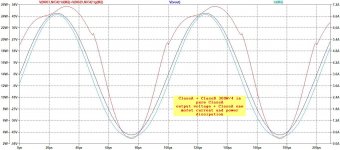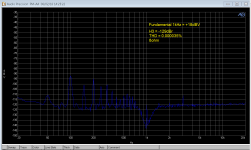The same amp, one ClassA output mosfet power consumption at 170W/4.
Attachments
Last edited:
The worst example of ‘feedback is bad’ I’ve seen is on the Audio Note website. All the usual feedback tropes are there - clearly Colloms acolytes.
Amplifier designers who eschew feedback would do well to remember nature abounds with it. Just take a look at the metabolic pathways in a living organism, or try to explain stellar nuclear fusion in a stable main sequence star like our sun without it. Good luck on that one . . .
Feedback: A Short History
Audio Note is now "working with" eVGA to make a crappy PCIe sound card which isn't even native PCIe. Not to mention it uses op-amps (and poorly chosen it would seem, at that).
Free streaming (mp3?) some early Sun Ra, notoriously bad recordings to boot, great "imagery"I would argue Jelly roll doesn't sound any better on 24/96!.

The minimal impedance value of a speaker is its DC resistance. Usually 6 Ohms for a 8 ohm speaker.Could you please show the result for 4ohm load at various amplitudes? 8ohm load is unrealistic, I do not know a usual speaker that would have impedance equal or above 8ohm in the whole frequency range. I know that 8ohm results are nicer, but for the real world, useless.
An ideal speaker should have a flat frequency curve AND a flat impedance curve. I do not understand why almost all the manufacturers neglect this last point. And it is sooo easy. If you have tried by yourself, with appropriate RLC and LC networks on each speaker of a multiway cabinet, comparing measurements and listening experiences, you'll never go back.
One other advantage is it helps to calculate the passive filters and It should help the marketing departments, showing the near flat impedance curve, to argue about the absolute superiority of their product with their usual BS ;-)
Last edited:
I sim down to 2 Ohms and I test down to 2 Ohms - on 2 Ohms only single channel driven though. A good EF3 will still deliver well under 100 ppm ar 2 Ohms close to full power. On multiple parallel output type stages 50 ppm should be achievable.
The minimal impedance value of a speaker is its DC resistance. Usually 6 Ohms for a 8 ohm speaker.
I am sorry but in a multiway speaker it is a combination of drivers impedance + crossover circuit and impedance often goes to 2 ohm at some frequency. I believe you are only joking. Please check some measurements of speakers in Stereophile, or measure yours, if it is not a single driver without crossover. Sometimes I really do not understand some replies here.
A good EF3
This is much more important than 10pcs of EF pairs in 2EF config in parallel, re final linearity 😉
SOTA -
Seems no one here has read the book by Kolinummi? Nothing to do with is GNFB good or bad. Instead, an extremely linear circuit can be designed that does not require GNFB. I would imagine if you then add GNFB to it, the results will surely be stunning.
The effectiveness of adding an Error Correction FB is shown to be VERY effective.
Also, notice the comment that the design being shown by the author is very DC stable such that a DC servo would not be needed.
IMHO This is SOTA and I want to listen to such.
THx-RNMarsh
Seems no one here has read the book by Kolinummi? Nothing to do with is GNFB good or bad. Instead, an extremely linear circuit can be designed that does not require GNFB. I would imagine if you then add GNFB to it, the results will surely be stunning.
The effectiveness of adding an Error Correction FB is shown to be VERY effective.
Also, notice the comment that the design being shown by the author is very DC stable such that a DC servo would not be needed.
IMHO This is SOTA and I want to listen to such.
THx-RNMarsh
Last edited:
I am not "joking", as you says in such a gentle (and usual) way.. Just I don't care about bad designed enclosures or dishonest specifications.I am sorry but in a multiway speaker it is a combination of drivers impedance + crossover circuit and impedance often goes to 2 ohm at some frequency. I believe you are only joking.
Whatever you want to achieve, with passive filters, there is NO technical reason why you should go under the DC value of the speakers as a result, amplifier side.
If you use one 4 ohms speaker in a 8 ohms cabinet, it is dishonest to pretend it is a 8 ohms cabinet. And if somewhere in the impedance curve of a finished cabinet, you can see a frequency where impedance is 2 ohms, it is dishonest as well to pretend it is a 8 ohms cabinet.
EOT for me, I take no pleasure to argue for nothing.
Last edited:
SOTA -
Is this good, re distortion?
This is measured, not simulated. Y-axis calibrated in dBV. Fundamental = +18dBV.
Attachments
Quite a few of us have read Kolinummi's book. None have built and measured and listened to an amplifier that follows his design suggestions. Not even the cheerleaders who praise his holy name.
Quite a few of us have read Kolinummi's book. None have built and measured and listened to an amplifier that follows his design suggestions. Not even the cheerleaders who praise his holy name.
Indeed, it has taken me a while to get through it, but it is a really great overview of inherent distortion mechanisms and proposed remedies... Great book!
Howie
Quite a few of us have read Kolinummi's book. None have built and measured and listened to an amplifier that follows his design suggestions. Not even the cheerleaders who praise his holy name.
I have that book too. He shows only simplified schematics of his built amps.
Hi Richard,
Now that`s a good idea. Scientifically responsible too.
-Chris
See here The AMNESIS amp: a good amplifier, like a gentleman, has no memory.
I am sorry but in a multiway speaker it is a combination of drivers impedance + crossover circuit and impedance often goes to 2 ohm at some frequency. I believe you are only joking. Please check some measurements of speakers in Stereophile, or measure yours, if it is not a single driver without crossover. Sometimes I really do not understand some replies here.
The IEC standard is minimum impedance should be greater than 80% of the rated impedance.
The AES version is 50%.
And of course there are folks who pay no attention to the standards.
Home theater amplifiers often self protect below 6 ohm loads. I once had a professional amplifier that had problems at a real 4 ohm load. The manufacturer discontinued that model.
I recently ran into problems trying to explain to a consultant that professional loudspeakers do not require damping factors greater than 10. The electrical code assumes that if you are running power limited tray cable above 12 gauge, it is driving a hazardous load.
The IEC standard is minimum impedance should be greater than 80% of the rated impedance.
The AES version is 50%.
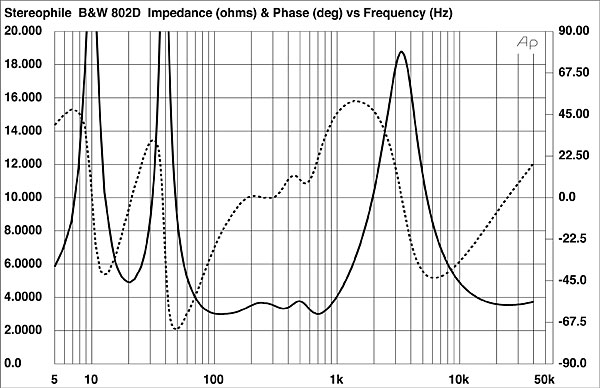
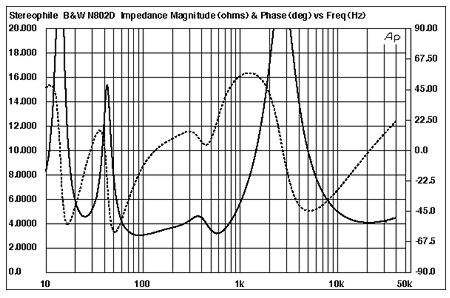
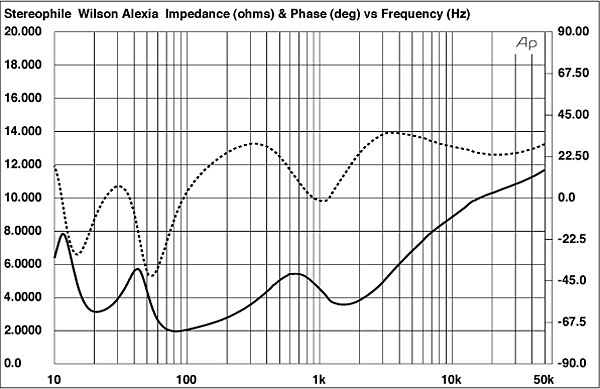
Shall I continue? I can post tens of speakers with impedances like these.
- Status
- Not open for further replies.
- Home
- Member Areas
- The Lounge
- John Curl's Blowtorch preamplifier part III
